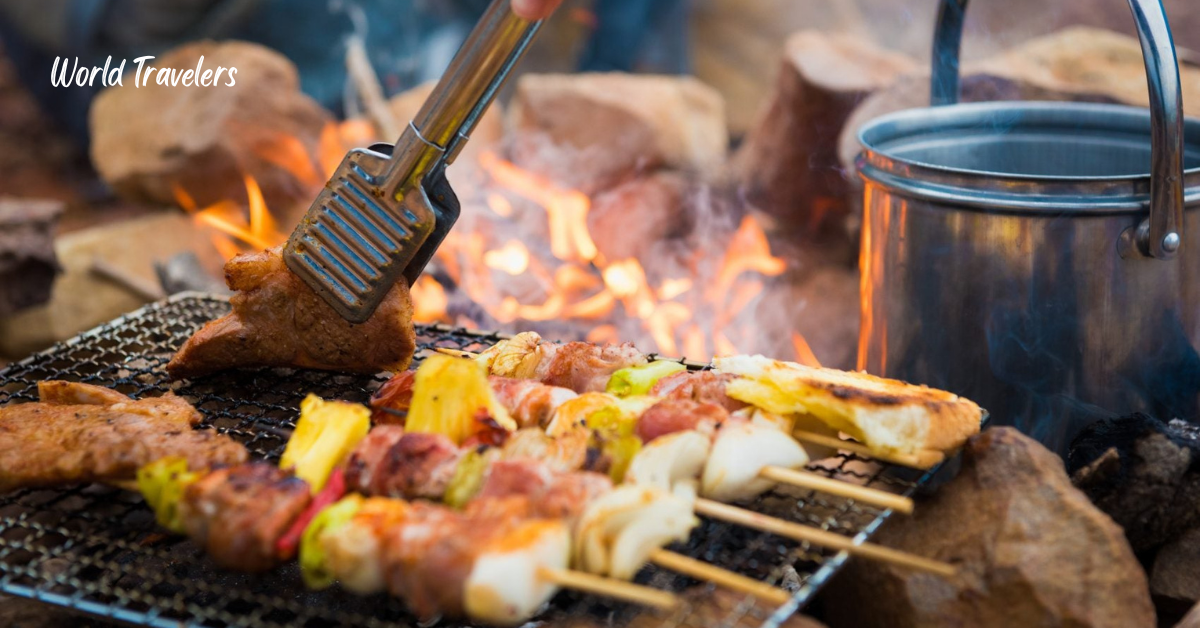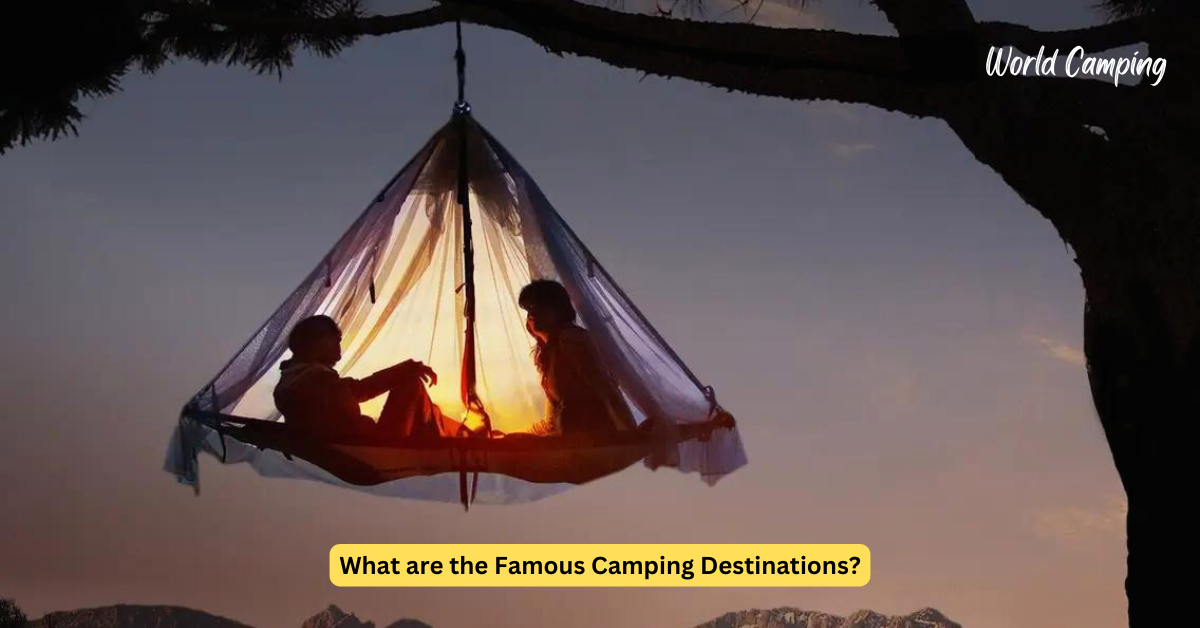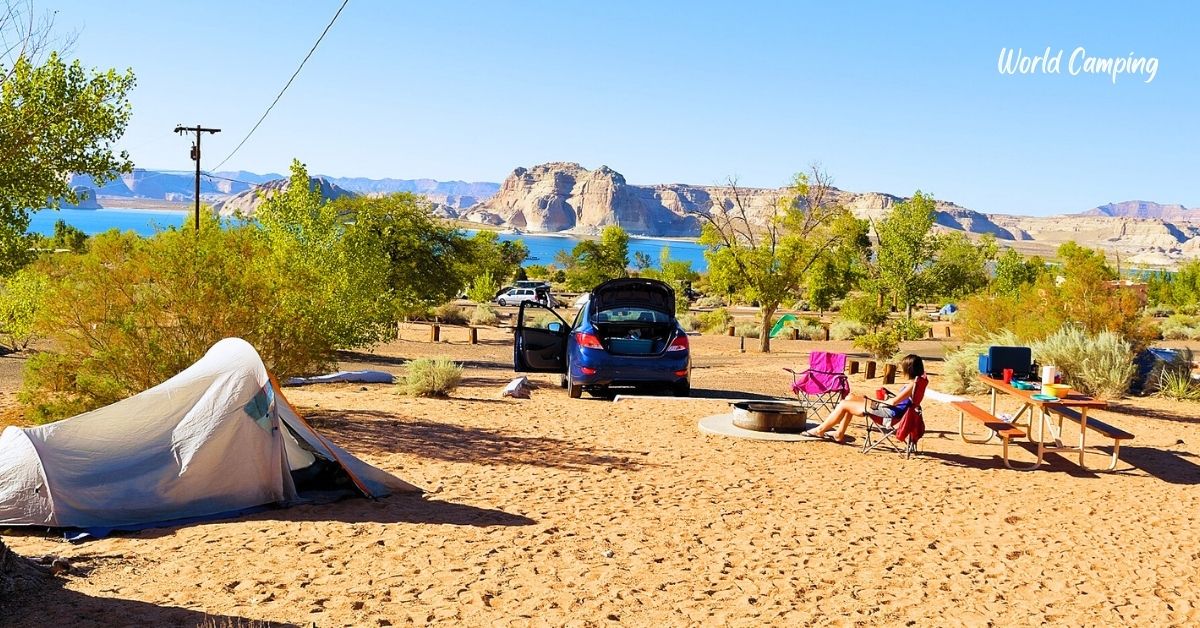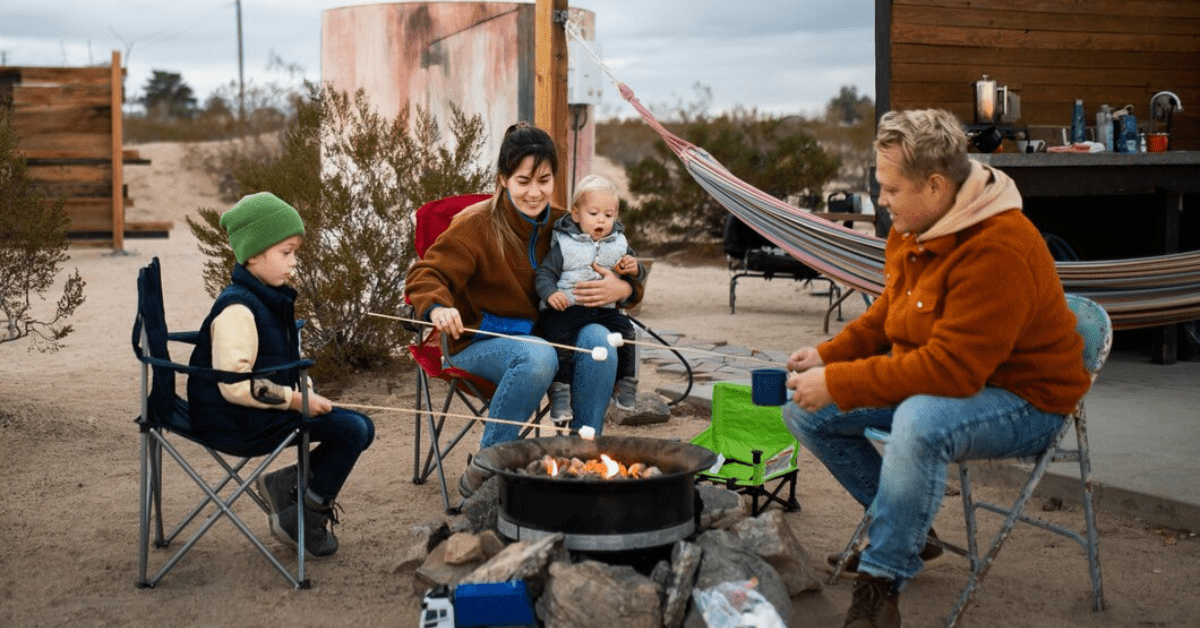How to Start a Campfire?
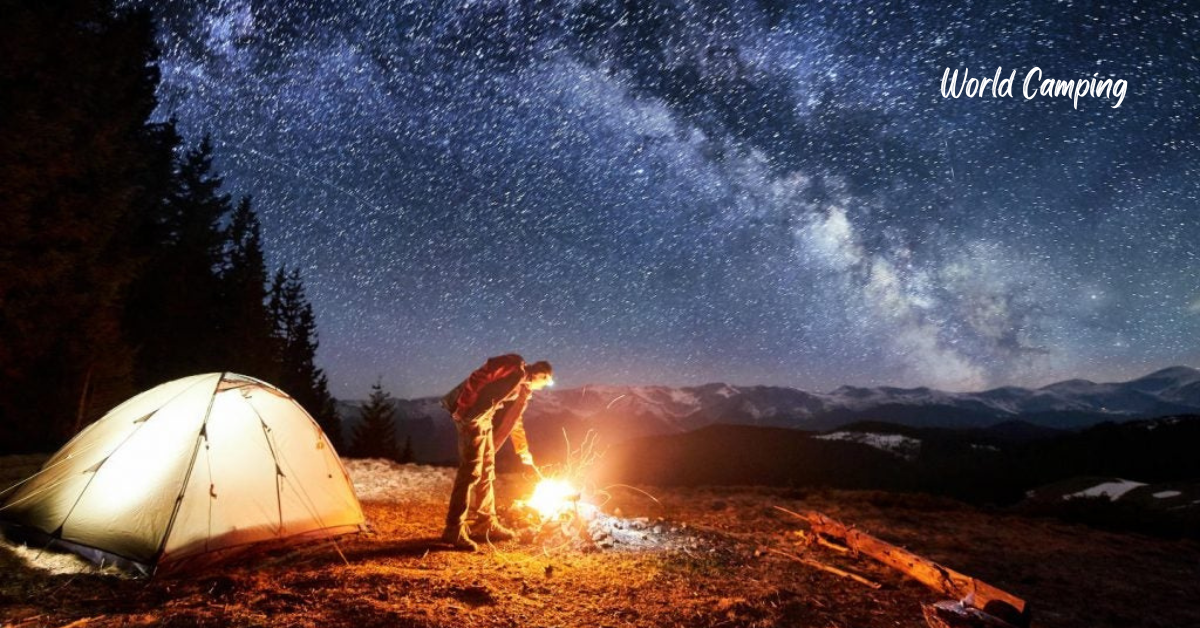
Starting a campfire is an essential skill for anyone who loves spending time in the great outdoors. Whether you’re camping with friends, cooking under the stars, or simply enjoying the warmth of a crackling fire, knowing how to safely and effectively start a campfire is essential.
Gathering Materials
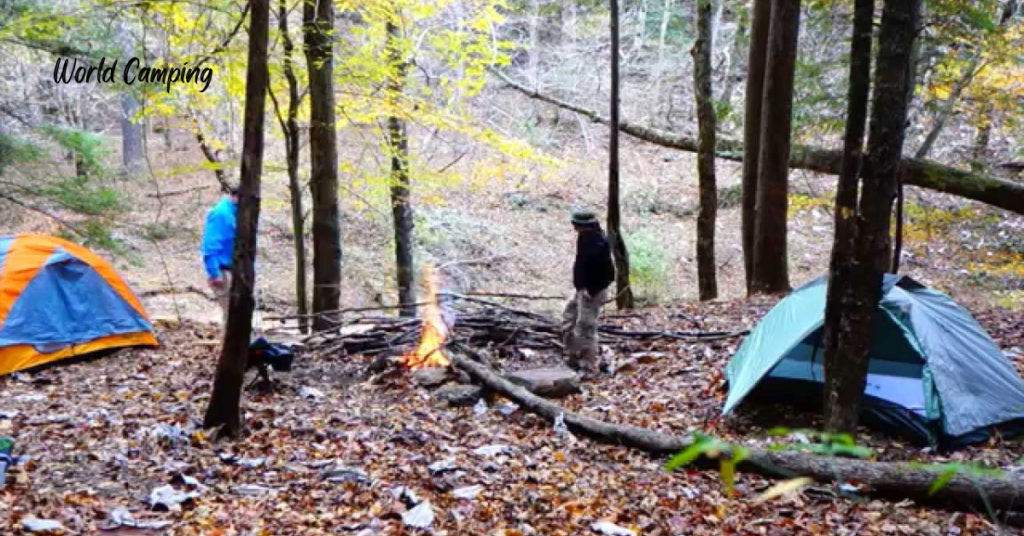
Starting a campfire requires gathering materials that are essential for creating a safe and efficient blaze.
Tinder
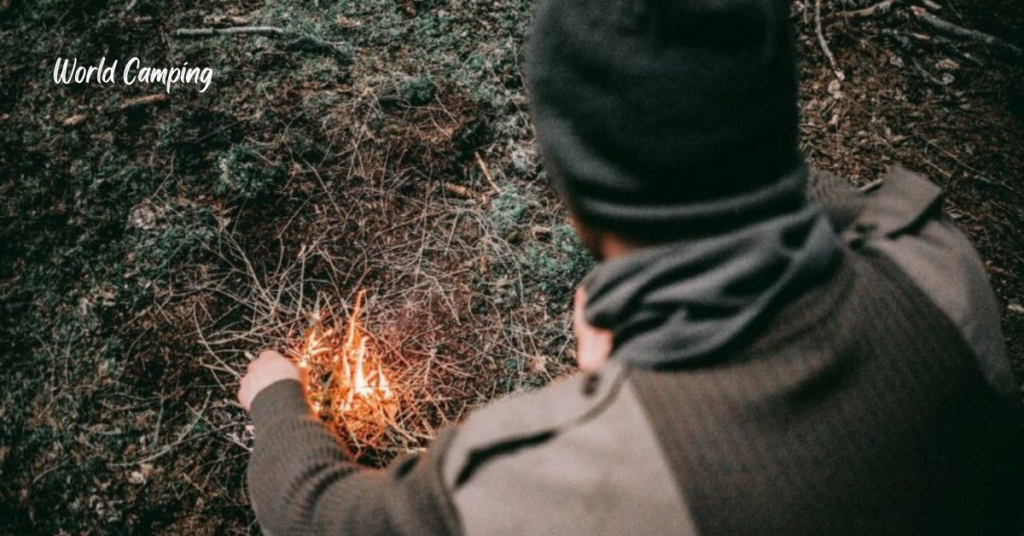
Tinder is a fundamental element in starting a campfire, serving as the initial fuel to ignite the flames. It consists of easily combustible materials that catch fire quickly, facilitating the transition to larger fuel sources. Effective tinder can be found in various natural forms, such as dry leaves, grass, bark shavings, or small twigs.
The key is to locate materials that are dry and lightweight, as moisture inhibits ignition and heavier materials can smother the flame. Tinder works by igniting easily from a spark or flame, creating a small but intense fire that then ignites the kindling and larger fuelwood.
Proper preparation of tinder involves gathering a sufficient quantity to sustain the initial stages of the fire-starting process. It’s crucial to gather tinder from dry sources found in the environment, as damp or wet materials will not catch fire easily, if at all.
Once gathered, tinder should be loosely arranged in a pile, providing ample surface area for ignition. Understanding the importance of tinder and selecting appropriate materials are essential steps in successfully starting a campfire, ensuring a safe and enjoyable outdoor experience.
Fire Wood
Firewood is a vital component in the process of starting and maintaining a campfire, providing the sustained fuel necessary for a lasting blaze. It consists of larger pieces of wood that serve to feed and sustain the flames once the initial kindling and tinder have ignited.
When selecting firewood for a campfire, it’s essential to prioritize dry wood that burns efficiently with minimal smoke and residue. Dry wood ignites more readily and produces a cleaner burn compared to green or damp wood, which can be challenging to light and may generate excessive smoke.
Ideal firewood includes seasoned hardwoods like oak, maple, or birch, which have been allowed to dry out naturally, typically for at least six months to a year. Softwoods like pine or cedar can also be used but tend to burn faster and may produce more sparks and resinous smoke.
It’s crucial to gather firewood responsibly, either by collecting fallen branches and deadwood from the ground or using designated firewood areas to minimize environmental impact. Additionally, break or chop firewood into manageable sizes that fit within the fire pit or ring, ensuring a steady supply of fuel throughout the campfire’s duration.
By selecting and preparing suitable firewood, campers can create a safe, efficient, and enjoyable fire for cooking, warmth, and camaraderie during outdoor adventures.
Preparing the Fire Pit
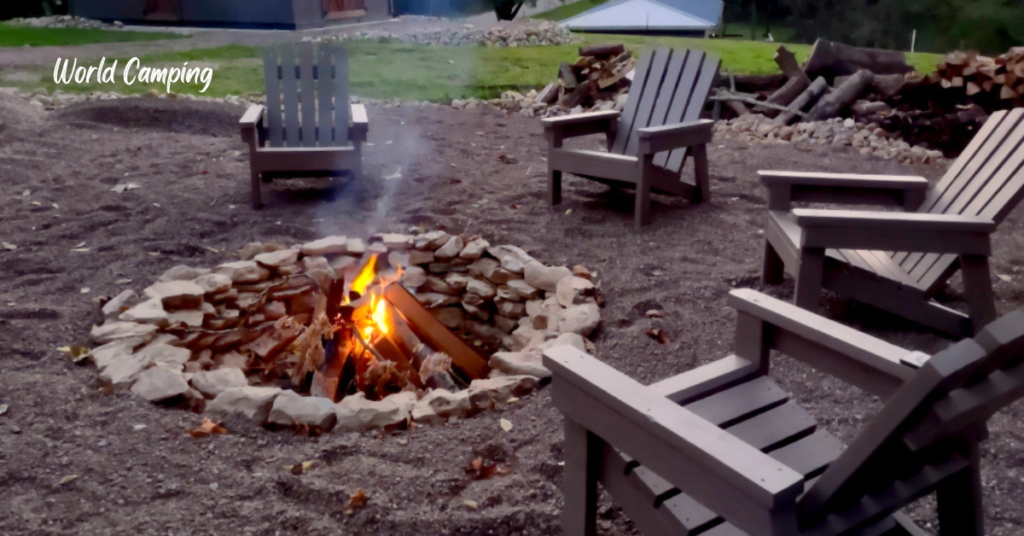
Once you’ve gathered your materials, it’s time to prepare the fire pit.
Check for Fire Regulation
Before starting a campfire, it’s imperative to thoroughly check for fire regulations and restrictions in the area where you plan to build your fire. This step is essential for ensuring the safety of yourself, others, and the surrounding environment.
Fire regulations can vary significantly depending on location, time of year, weather conditions, and local policies. Start by consulting official sources such as national park websites, forest service offices, or campground management for up-to-date information on current fire regulations, including any bans or restrictions in place.
Pay close attention to any posted signs or notices regarding fire safety and regulations at your campsite or recreational area. Additionally, consider the environmental conditions that may affect fire safety, such as drought, high winds, or dry vegetation, which can increase the risk of wildfires.
Some areas may have specific requirements for campfires, such as using designated fire pits or rings, obtaining permits for open fires, or adhering to certain hours for burning. Familiarize yourself with these regulations and plan your campfire accordingly.
It’s also essential to practice responsible fire management techniques, such as never leaving a campfire unattended, fully extinguishing the fire before leaving the area, and using water to douse the flames thoroughly.
By following fire regulations and adopting responsible fire management practices, you can enjoy the warmth and camaraderie of a while minimizing the risk of accidents or wildfires and preserving the natural beauty of the outdoors for future generations.
Clear the Area
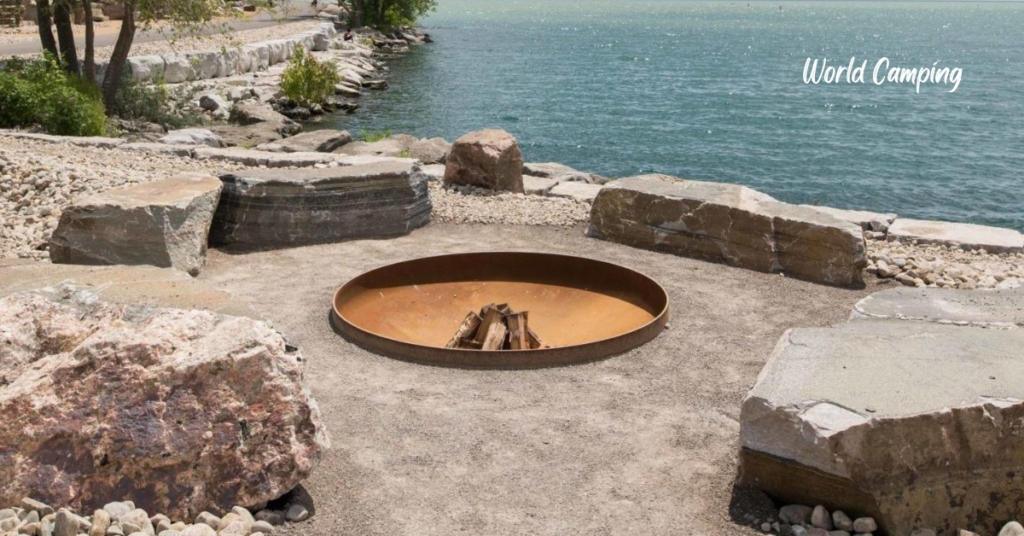
Clearing the area is a critical step in safely starting a campfire, as it helps prevent the spread of flames and minimizes the risk of accidents. Begin by selecting a suitable location for your campfire, preferably in an open area away from overhanging branches, dry grass, or other flammable materials.
Look for a level spot with bare soil or gravel, as this provides a natural firebreak and reduces the likelihood of sparks igniting nearby vegetation. Next, clear away any debris, such as leaves, twigs, or pine needles, from the area immediately surrounding the fire pit or ring.
This helps create a buffer zone that reduces the risk of stray embers igniting nearby materials. Be thorough in your clearance efforts, extending at least a 5 to 10-foot radius around the fire site. Remove any combustible materials from the vicinity of the fire pit, including loose clothing, tents, camping gear, or flammable liquids.
Once the area is cleared, consider creating a barrier around the fire pit using rocks or a metal fire ring if available. This helps contain the flames and prevents them from spreading beyond the designated fire area.
Finally, ensure that you have a ready water source nearby, such as a bucket or hose, to extinguish the fire quickly if necessary. By taking the time to clear the area before starting your campfire, you can enjoy a safer and more enjoyable outdoor experience while minimizing the risk of accidents or wildfires.
Arranging the Tinder and Kindling
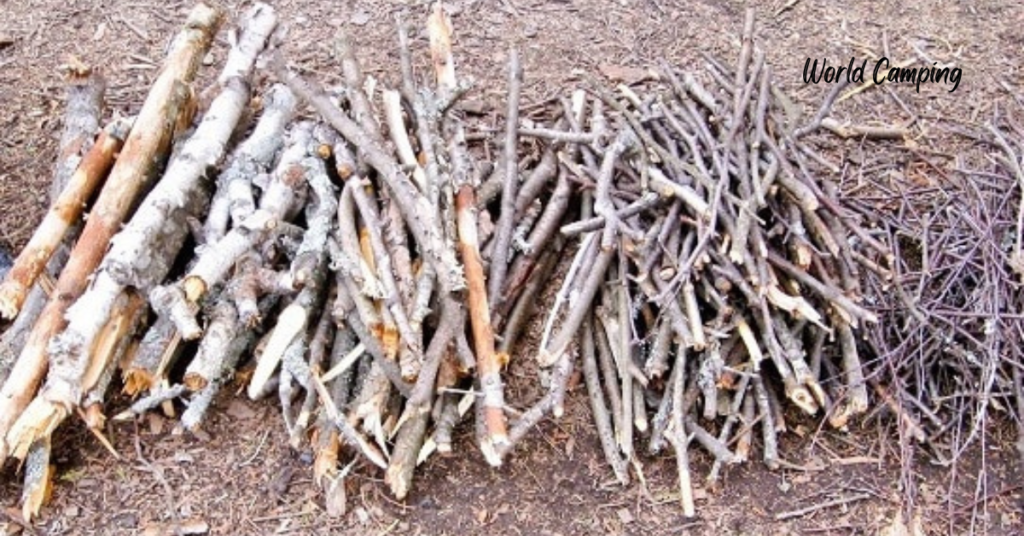
Now that your fire pit is prepared, it’s time to arrange the tinder and kindling in a way that promotes optimal airflow and ignition.
Create Ventilation Gaps
Creating ventilation gaps is an important aspect of starting a campfire efficiently and safely. Adequate airflow is essential for supplying oxygen to the fire and promoting combustion, while also helping to prevent the buildup of smoke and gases.
To create ventilation gaps, begin by arranging your tinder and kindling in a way that allows for airflow. This can be achieved by loosely stacking small sticks or twigs in a tipi or log cabin formation around the tinder, leaving space between the pieces to allow air to circulate.
As the fire begins to catch and grow, pay attention to the direction of the wind and position your fuelwood accordingly to encourage airflow. Placing larger pieces of wood on the upwind side of the fire can help draw air into the flames, while also directing smoke away from your campsite.
Additionally, periodically adjusting the arrangement of the fuelwood can help maintain airflow and prevent the fire from smoldering or becoming too smoky. This may involve adding more fuelwood to keep the fire burning steadily or repositioning existing pieces to ensure even combustion.
It’s also important to avoid overcrowding the fire with too much wood, as this can restrict airflow and hinder combustion. Instead, gradually add fuelwood as needed, allowing the fire to build and establish a steady burn.
By creating ventilation gaps and managing airflow effectively, you can start and maintain a campfire that burns efficiently, produces minimal smoke, and provides warmth and light for your outdoor adventures.
Add Fuel Sticks
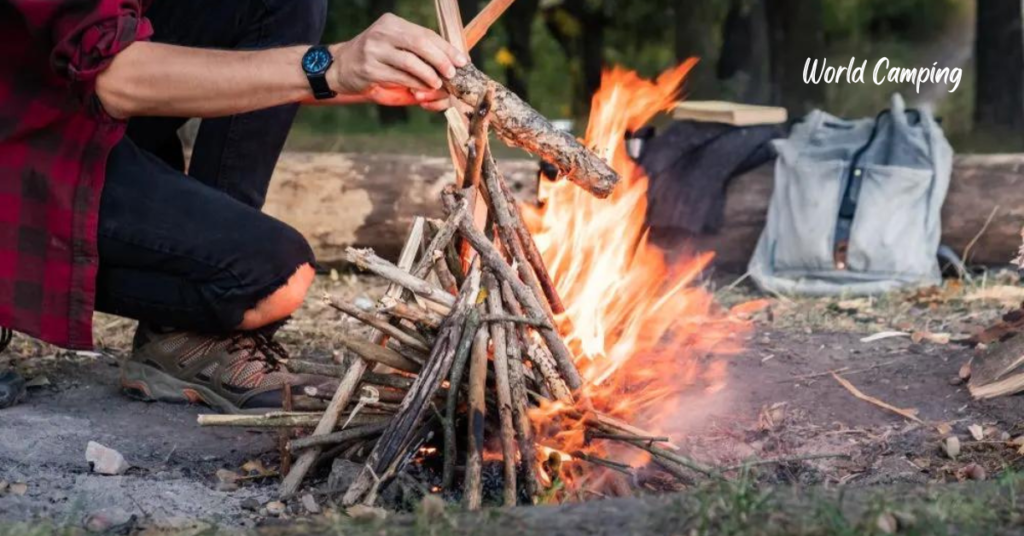
Adding fuel sticks is a crucial step in the process of starting and maintaining a campfire. Fuel sticks, also known as kindling, are slightly larger pieces of wood than tinder that serve to feed the growing flames and help transition the fire to larger fuelwood.
To add fuel sticks effectively, begin by ensuring that your initial tinder has caught fire and is burning steadily. Once you have a good bed of hot coals or flames, carefully place the fuel sticks onto the burning tinder or log cabin formation, ensuring that there is enough space between the sticks to allow for airflow.
The size of the fuel sticks should be slightly larger than the tinder, typically about the diameter of a pencil or slightly larger. This allows them to catch fire easily from the heat of the burning tinder and gradually build the fire’s intensity.
As the fuel sticks ignite and the flames grow, continue to add larger pieces of wood to sustain the fire. When adding fuel sticks, it’s essential to maintain a balance between adding enough wood to keep the fire burning steadily and overcrowding the fire, which can restrict airflow and inhibit combustion.
Start with a small handful of fuel sticks and gradually add more as needed, paying attention to how the fire responds and adjusting accordingly. By adding fuel sticks at the right time and in the right quantity, you can establish a strong and sustainable campfire that provides warmth, light, and ambiance for your outdoor experience.
Lighting the Fire
With your tinder and kindling arranged and your fire pit prepared, it’s time to light the fire.
Use a Fire Starter
Using a fire starter is a practical and efficient method for igniting a campfire, especially when conditions are less than ideal or when traditional tinder materials are scarce. Fire starters come in various forms, including commercially available products such as firelighters, waterproof matches, or flint and steel, as well as DIY options like cotton balls soaked in petroleum jelly or homemade wax-coated cardboard strips.
To use a fire starter effectively, begin by preparing your campfire site and arranging your tinder and kindling as usual. Then, depending on the type of fire starter you’re using, follow the manufacturer’s instructions or the specific method for your DIY option.
For example, if using waterproof matches, strike the match against the striker surface to ignite it and then carefully transfer the flame to the tinder. If using a flint and steel, strike the steel against the flint to create sparks, directing them onto the tinder to ignite it.
Regardless of the type of fire starter used, it’s essential to exercise caution and ensure that the flame is transferred safely to the tinder without causing any accidental ignition of nearby materials.
Using a fire starter can be particularly helpful in wet or windy conditions when traditional fire-starting methods may be more challenging. Additionally, having a reliable fire starter on hand can provide peace of mind and confidence in your ability to start a fire quickly and efficiently, enhancing your outdoor camping or hiking experience.
Monitor the Flame
Monitoring the flames of a campfire is a crucial aspect of fire management and safety throughout the duration of the fire. Once the fire has been successfully started, it’s essential to keep a close eye on the flames to ensure that the fire remains under control and does not pose a risk of spreading or causing harm.
One key aspect of monitoring the flames is observing their size, intensity, and behaviour. A healthy campfire will have flames that burn steadily and evenly, with a moderate size and a bright, clean appearance.
If the flames become too large or erratic, it may indicate that the fire is getting out of control, and action should be taken to reduce its size or intensity. Additionally, monitoring the flames involves watching for signs of smoldering or excessive smoke, which can indicate that the fire is not burning efficiently and may need to be adjusted or tended to.
Finally, it’s important to be mindful of the direction of the wind and how it affects the flames, as changes in wind speed or direction can influence the behaviour of the fire and may require adjustments to maintain its safety and stability.
By actively monitoring the flames of a campfire and responding promptly to any changes or concerns, campers can ensure a safe and enjoyable outdoor experience while minimizing the risk of accidents or wildfires.
Conclusion & Recap
Starting a campfire is a skill that every outdoor enthusiast should master. By following the six essential steps outlined in this guide – gathering materials, preparing the fire pit, arranging the tinder and kindling, lighting the fire, tending the flames, and extinguishing the fire – you can enjoy a safe and successful campfire experience.
Remember to always prioritize safety, respect the environment, and adhere to any fire regulations in your area. With practice and patience, you’ll become a campfire-building expert in no time. So go ahead, gather your supplies, and ignite the flames for an unforgettable outdoor adventure.
FAQS
How can I ensure my campfire is environmentally friendly?
To make your campfire eco-friendly, use only locally sourced firewood to prevent the spread of invasive species and diseases. Also, avoid burning treated or painted wood, as it releases harmful chemicals into the air.
What are some alternative methods for starting a campfire without matches or lighters?
here are several ways to start a fire without matches or lighters, such as using a fire striker, flint and steel, or a magnifying glass to focus sunlight onto tinder. You can also try the bow drill or hand drill method, which involve creating friction between two pieces of wood to generate heat.
How do I build a safe and stable campfire structure?
Start with a small pile of tinder, like dry leaves or small twigs, in the center of your fire pit. Surround the tinder with kindling, slightly larger sticks, arranged in a teepee or log cabin formation. Once your kindling is burning well, add larger logs gradually to maintain the fire. Make sure your fire is contained within the fire pit and avoid building it near overhanging branches or other flammable materials.
What safety precautions should I take when starting a campfire?
Always check for fire regulations and obtain any necessary permits before starting a fire. Clear the area around your fire pit of any flammable materials and make sure it’s at least 10 feet away from tents, trees, or other structures. Keep a bucket of water, a shovel, or a fire extinguisher nearby in case the fire gets out of control, and never leave a fire unattended.
How can I tell if my wood is dry enough to burn efficiently?
Dry wood is essential for a successful campfire. Look for wood that snaps easily when you try to break it and has a dull, hollow sound when you tap two pieces together. It should also feel lightweight and look gray or brown in color. Avoid using green or damp wood, as it will produce more smoke and less heat. If your wood is a bit damp, you can dry it out by leaving it in a sunny spot for a few hours before using it.

